
INTRODUCTION TO THE PANCARATRA AND AHIRBUDHNYA SAMHITA
Book Specification
| Item Code: | IDG589 |
| Author: | F. OTTO SCHRADER |
| Publisher: | The Adyar Library and Research Centre |
| Language: | English |
| Edition: | 1995 |
| ISBN: | 0835672778 |
| Pages: | 212 |
| Cover: | Hardcover |
| Other Details | 8.5" X 5.6" |
| Weight | 340 gm |
Book Description
PREFACE:
Introduction to the Pancaratra and the ahirbudhnya samhita by F. Otto Schrader, the then Director of the adyar Library, first published in 1916 (Second Impression 1971) is a pioneering work in the field which has served as 'a Concise, but encyclopedic reference book on the Pancaratra.' It is an example of Garman scholarship, and set the standard for the publications of the Adyar Library and Research Centre. It was written as an exhaustive introduction to two volume edition of the Ahirbudhanya Samhita prepared under the direction of Schrader by Pandit M. D. Ramanujacharya, and deals with the whole literature of Pancaratra then available, the philosophy of Pancaratra, and a detailed analysis of the contents of the Ahirbudhnya Samhita. Though much work has been done in the field by the Adyar Library and Others. Schrader's introduction has not been superseded and still remains and excellent introduction to that system of Vaisnavism. The Adyar Library and Research Centre has published the Pancaratraraksa of Vedanta Desika, a critical work in the field, in 1942, the Laksmitantra (1959) and the Sanatkumara Samhita edited by Pandit V. Krishnamacharya (1969). To meet the steady demand from the discerning public, we are issuing a third impression of this excellent work on the Pancaratra.
Prefatory Note
The book, small in size but rich in contents, which is herewith placed before the public, has been written during internment at Ahmednagar because of the war, though some of the materials on which it is based had, fortunately, been collected by him before the war broke out. Only three of the Samhita MSS. Of the Adyar Library, namely those of nos. 8, 70 and 195 of the synopsis on pp. 6ff., which were acquired recently, have remained entirely unknown to Dr. Schrader.
The burden of seeing the work through the press has fallen on the undersigned who, though having done all in his power to acquit himself honourably of his task, is fully aware of its difficulties and of the inadequacy of his knowledge of Sanskrit to cope with these with complete success.
The author has undoubtedly doubled the value of his monograph by adding to it copious Indexes and a detailed synopsis of the contents. Together they render the whole of the subject-matter of the book in all its categories instantaneously available for reference. Thus the work may preliminarily serve as a concise but encyclopaedic reference book on the Pancaratra, until it shall be superseded by subsequent more exhaustive publications. The Numerical Index contains some items not found elsewhere in the book.
I may be permitted to express here my great satisfaction at having had the privilege of watching over the booklet on its way through the press, a last service rendered to the Adyar Library in close and pleasant co-operation with Dr. Schrader, which puts a term to a period of over seven years' daily collaboration with the same aims, in the same spirit and in complete harmony, for the same object.
May Dr. Schrader's last official work performed for the Library enhance the renown of that institution, and may it be judged to constitute of fit conclusion to his eleven years' tenure of office as Director of the Adyar Library.
The publication of this book also, as that of the two volumes of the text edition of the Ahirbudhnya Samhita, has been greatly facilitated by the courtesy of the military censors at Ahmednagar, to whom our sincere thanks are due.
Introductory Remark
The publication of the Ahirbudhnya Samhita, by the Adyar Library, has been undertaken with a view to starting investigations in a branch of Sanskrit literature which was once cultivated in countries as far distant from each other as Kashmir, Orissa and Mysore, but is now practically extinct except in a very few places of Southern India where considerable remnants of it are still being preserved and partly even studied. Some scanty information about it has, indeed, reached the West, and a few of the Samhita-s of the Pancaratra-s have been published; still, when asked about the latter, most orientalists will even now be likely to confess that they have so far seen only the Narada Pancaratra, 'a Tantric work of little if any value' while, as to the philosophy of the Pancaratra, the theory of the avatara-s in its common Vaisnavite form and a very elementary conception of the doctrine of the vyuha-s (derived from the commentaries on Brahma sutra, II. 2. 42) will be found to be all that is know. An attempt will be made in the following pages to provide the future student of this unexplored field with a provisional foundation.
| Prefatory Note | v | |
| INTRODUCTORY REMARK | 1 | |
| I. | THE LITERATURE OF THE PANCARATRA-S | 2-30 |
| Inspired and non-inspired literature | 2 | |
| The name Samhita and its synonyms | 2 | |
| Knowledge of the Pancaratra in the West, etc. | 3 | |
| Lists of Samhita-s | 3 | |
| Synopsis of five lists | 6 | |
| Samhita-s not mentioned in the lists | 12 | |
| Samhita-s present in Libraries | 13 | |
| Editions of Samhita-s | 14 | |
| Extent of Samhita literature | 15 | |
| Chronology | 15 | |
| Provenance and diffusion | 18 | |
| Terminus ad quem of original Samhita-s | 22 | |
| Three classes of Samhita-s | 22 | |
| Chronological table of chief Samhita-s | 23 | |
| Later additions in the lists | 24 | |
| Division into pada-s, ratra-s and kanda-s | 25 | |
| The name Pancaratra | 27 | |
| Ten principal subjects | 29-30 | |
| II. | THE PHILOSOPHY OF THE PANCARATRA-S | 31-107 |
| 1. NIGHTS AND DAYS OF NARAYANA | 31-3 | |
| 2. HIGHER OR 'PURE' CREATION | 33-69 | |
| Laksmi and Visnu | 34 | |
| Kriya-sakti and bhuti-sakti | 35 | |
| The six Attributes (guna-s) of God | 36 | |
| Two sets, totality, three pairs of Attributes | 39 | |
| Process of emanation | 39 | |
| The term uyuha; names of the uyuha-s | 40 | |
| The sakti-s of the uyuha-s | 41 | |
| Two activities of each uyuha | 42 | |
| Their ethical activities | 44 | |
| In what sense they represent the soul, the mind and the ahamkara | 45 | |
| Twelve sub-uyuha-s descending form them | 48 | |
| Another set of twelve | 48 | |
| Thirty-nine uibhava-s (avatara-s) | 49 | |
| Primary and secondary avatara-s | 55 | |
| Origin of the avatara-s from the uyuha-s | 55 | |
| Plants and inanimate objects as avatara-s | 56 | |
| Arca-avatara, antaryamy-avatara | 56 | |
| Highest Heaven (Vikuntha) | 57 | |
| Withdrawn, or not, in the great Dissolution | 58 | |
| Heavenly (pure) matter | 59 | |
| The Para form of God | 60 | |
| Its ornaments and weapons | 60 | |
| The para and the vyuha Vasudeva | 61 | |
| Sakti-s (wives) of Visnu | 62 | |
| The angels (nitya-s or suri-s) | 64 | |
| The liberated | 66 | |
| 3. INTERMEDIATE CREATION | 69-79 | |
| The group-soul or kutastha-purusa | 69 | |
| The eight Manu-s | 71 | |
| The maya-sakti | 72 | |
| Beginning of evolution; ' descent ' of the Manu-s | 73 | |
| Sheath of maya ; niyati | 74 | |
| Kala (Time) | 75 | |
| Gross, Subtle and Highest Time | 76 | |
| The guna-body and the Avyakta | 77 | |
| 4. LOWER PRIMARY CREATION | 79-90 | |
| Matter, Time and Soul | 79 | |
| Origin of mahat; its synonyms | 80 | |
| Mahat threefold and eightfold | 81 | |
| Sojourn of the Manu-s in mahat | 82 | |
| What is mahat? | 83 | |
| The threefold ahamkara | 87 | |
| The individual ahamkara and the manas | 87 | |
| The ten elements and the ten senses | 88 | |
| Manava-s, manavasmanava-s, Fall of Man | 90 | |
| 5. SECONDARY OR ' GROSS ' CREATION | 91-8 | |
| Origin of the Egg (brahmanda) | 91 | |
| Intramundane vyuha-s | 93 | |
| Plurality of brahmanda-s | 94 | |
| Eight hundred Visnu-s | 97 | |
| 6. NATURE AND DESTINY OF THE SOUL | 98-107 | |
| The Soul during the Great Night | 98 | |
| Liberation and Great Dissolution | 100 | |
| The ' obscuration ' of the Soul and the Divine Grace | 101 | |
| 'Atomicity ' of the bound, ubiquitas of the liberated Soul | 102 | |
| 'Identity ' with the Lord, how Understood | 104 | |
| III. | THE SHIRBUDHNYA SAMHITA | 10867 |
| 1. THE MANUSCRIPT MATERIAL | 108-9 | |
| 2. NAME OF THE SAMHITA | 109-10 | |
| 3. PROVENANCE AND AGE | 110-114 | |
| 4. CONTENTS OF THE SAMHITA | 114-67 | |
| General Description | 114 | |
| The Great Problem (the Sudarsana) | 115 | |
| Explanation of the name Sudarsana | 116 | |
| The Sudarsana as the Kriya-sakti | 117 | |
| Involution and Evolution | 118 | |
| Variety of Views about Creation | 119 | |
| The Sudarsana as the ' support ' (adhara) | 120 | |
| The Sudarsana as the 'measure ' (pramana) | 123 | |
| Rationale of the avatara-s | 124 | |
| The original sastra | 125 | |
| The five siddhanta-s | 125 | |
| Fallacious Systems | 129 | |
| The Objects of Life | 129 | |
| Bondage and Liberation | 131 | |
| What System to Follow | 133 | |
| Castes and Periods of Life | 134 | |
| Interdependence of the two Higher Castes | 135 | |
| Origin of the Sounds | 136 | |
| The Three Occult Alphabets | 137 | |
| The sakti-mantra and the great sudarsana-mantra | 139 | |
| Initiation | 139 | |
| Rakisa-s and yantra-s | 140 | |
| Worship; yoga | 140 | |
| Origin of the astra-s | 143 | |
| Astra-mantra-s; description of the astra-s | 144 | |
| Story of Madhu and Kaitabha | 145 | |
| Description and worship of the Sudarasana-yantra | 146 | |
| Worship of the sixteen-armed Sudarsana | 146 | |
| Nyasa=bhakti | 147 | |
| Origin and Cure of Diseases | 147 | |
| The Great Baptism | 149 | |
| Origin, etc. of the Anga-mantra-s | 149 | |
| How ot Resist Divine Weapons and Black Magic | 149 | |
| How to make the Sudarsana-purusa appear | 150 | |
| The Four (five) forms of the Sudarsana-purusa | 150 | |
| The ideal purohita; the mahasanti-karman | 151 | |
| Story of Manisekhara (Effect of Prayer, etc.) | 152 | |
| Story of Kasiraja (Hostile Magic Neutralized) | 153 | |
| Story of Srutakirti (Hostile Neutralized) | 153 | |
| Story of Kusadhavaja (Prarabdha Annihilated) | 154 | |
| Story of Muktapida (The Magical Seat) | 155 | |
| Story of Visala (the Magical Finger-ring) | 156 | |
| Story of Sunanda (The Magical Mirror) | 156 | |
| Story of Citrasekhara (The Magical Banner) | 157 | |
| Story of Kirtimalin (The Magical Awning) | 158 | |
| Mantra-s explained from three standpoints | 161 | |
| The tara (ka) mantra | 161 | |
| Explanation of the Word names | 162 | |
| 'Gross ' and ' subtle ' sense, Other Designations of | 162 | |
| The narasimhanustubha-mantra | 163 | |
| The Purusa-sukta | 164 | |
| origin of the Theory of the vyuha-s | 165 | |
| The Ahirbudhnya-samhita briefly characterized | 166 | |
| The Parisista (Supplement) | 166 | |
| APPENDICES | 169-75 | |
| I. The Divine 24-fold Machinery of Existence | 169 | |
| II. Four kinds of Worship | 170 | |
| III. Description of the Four vyuha-s for the Purpose of Meditation | 173 | |
| INDEXES | 177-200 | |
| I. Subject Index | 177 | |
| II. Index of Authors and Works | 188 | |
| III. Index of Proper Names | 193 | |
| IV. Index of Sanskrit Terms | 195 | |
| V. Numerical Index | 197 | |
| VI. Index of Images (Similes) | 200 |
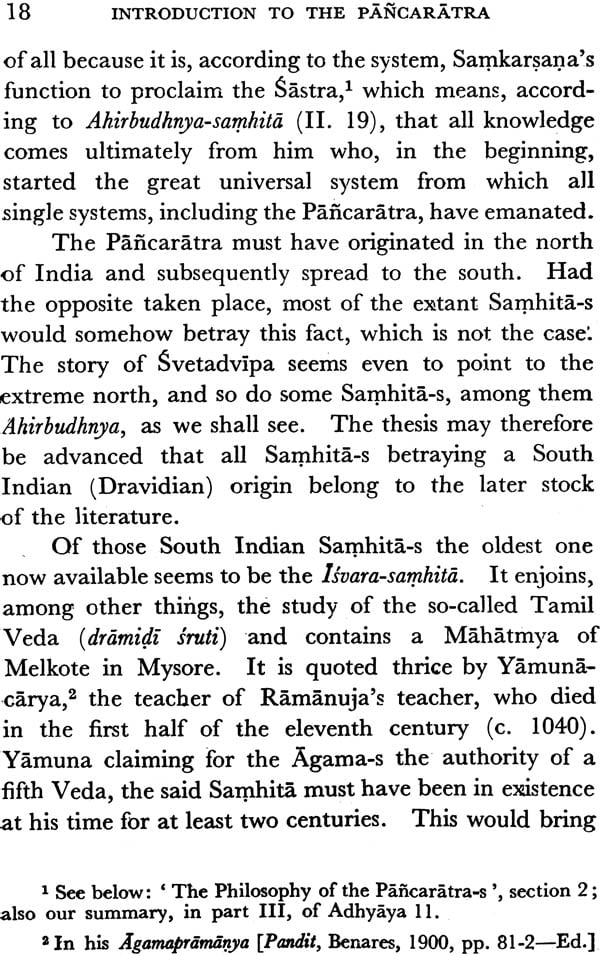
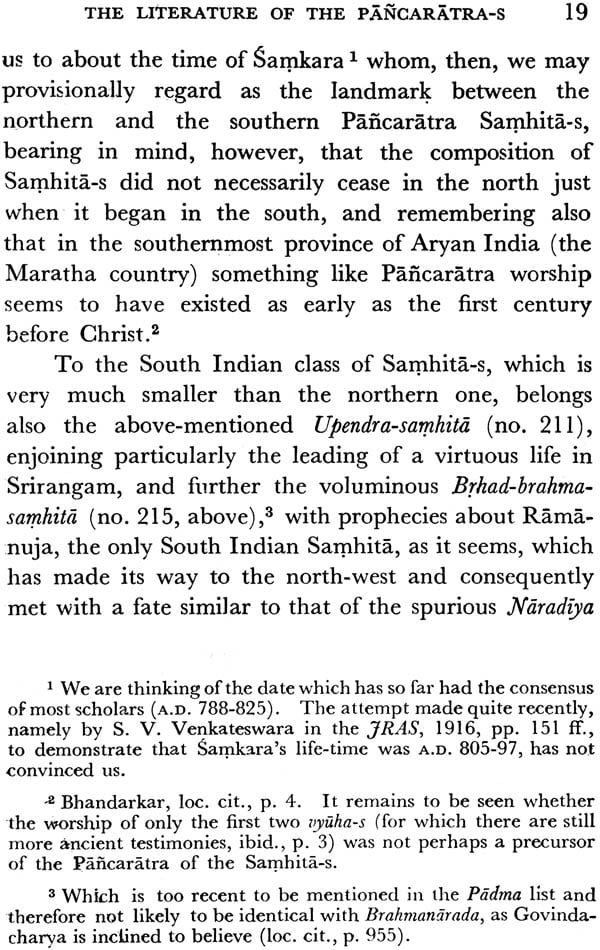
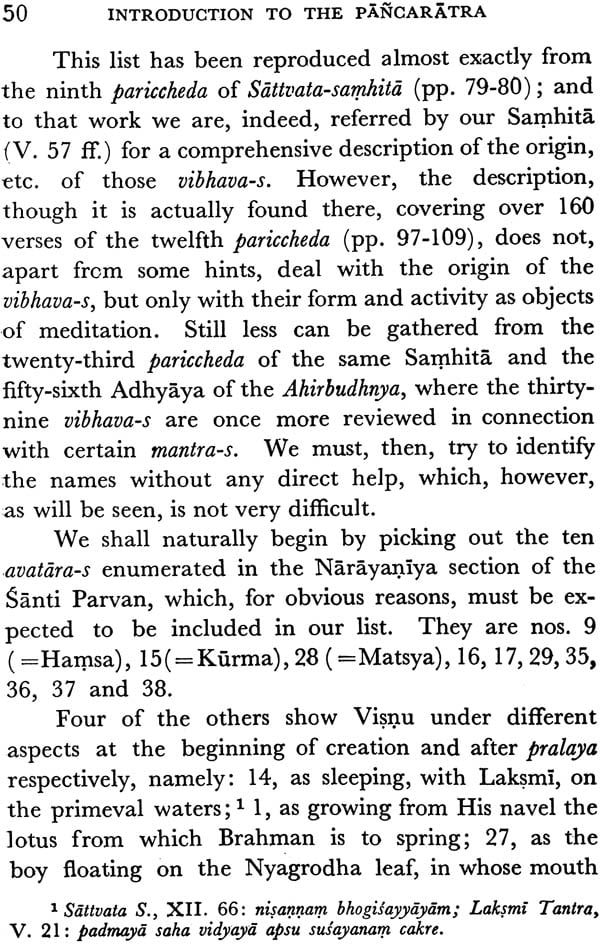
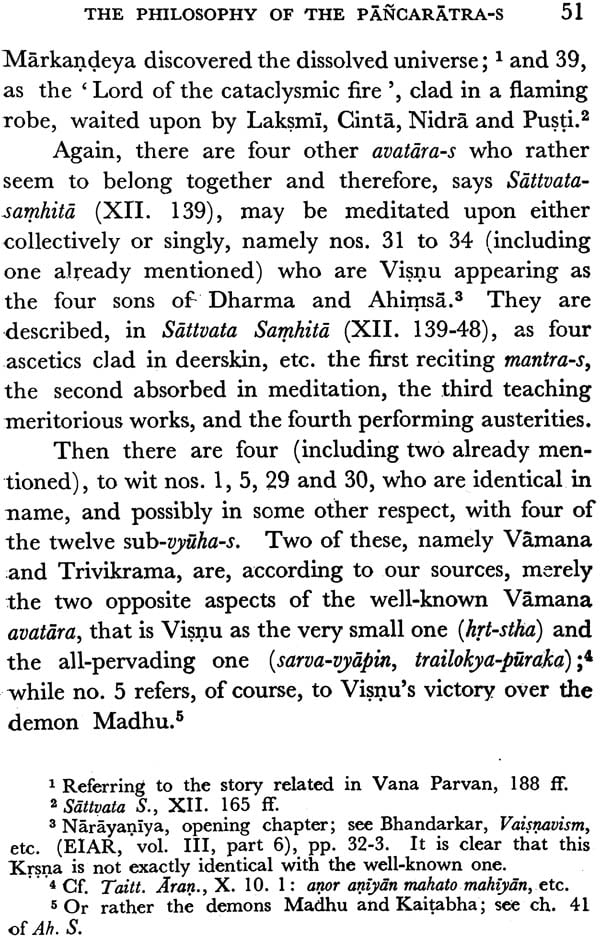
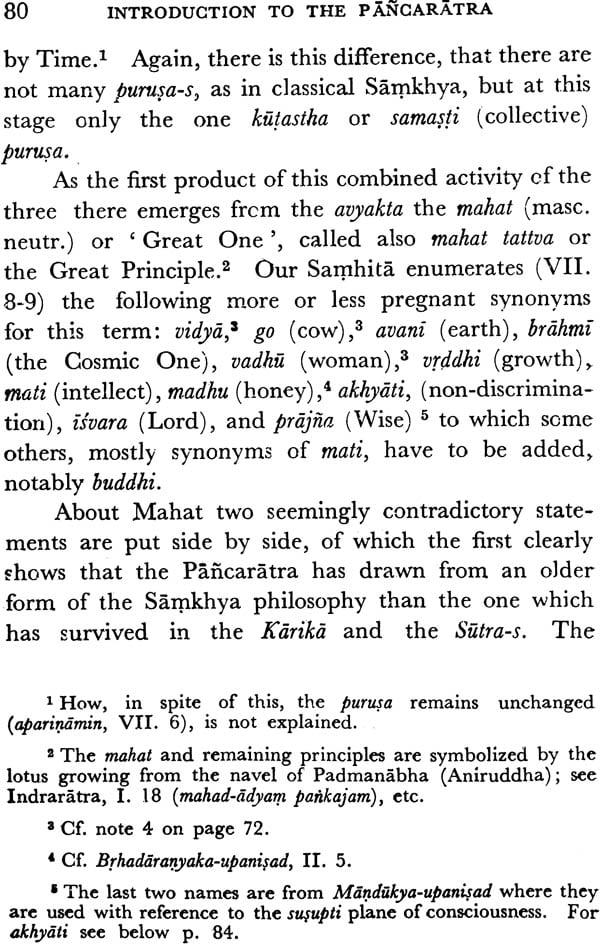
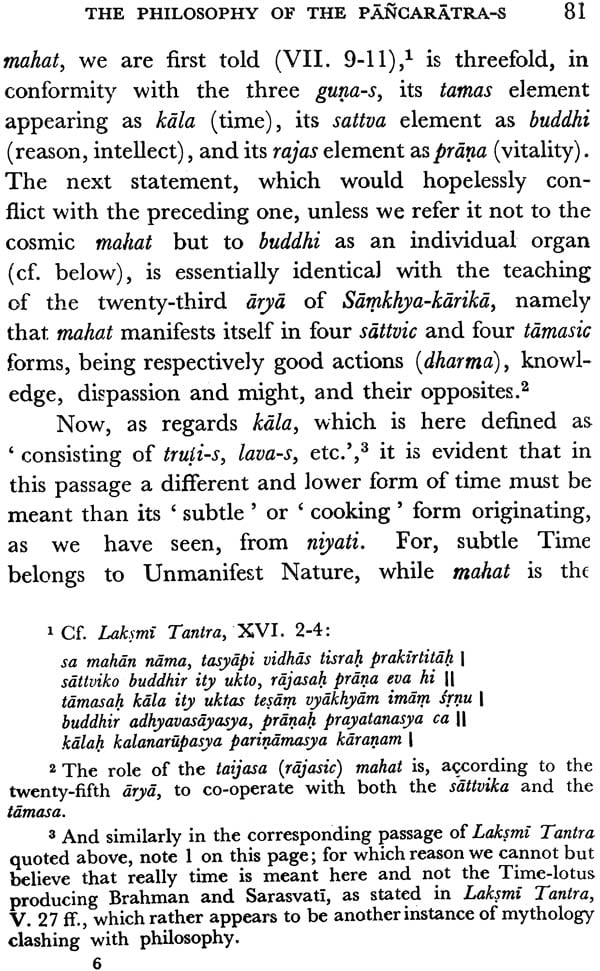
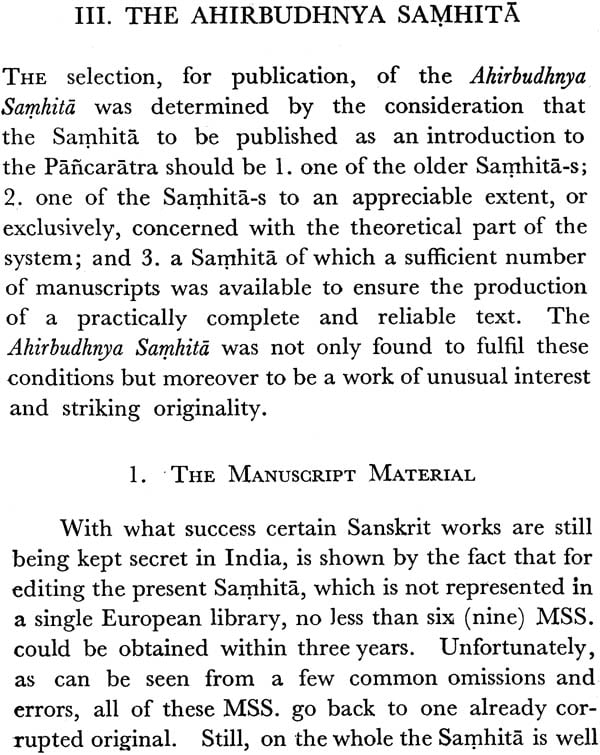
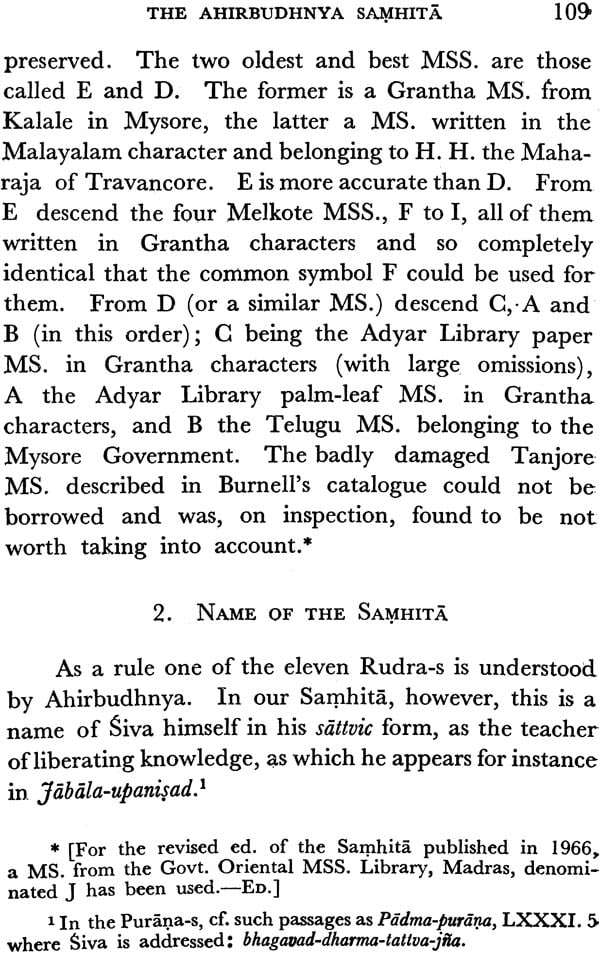

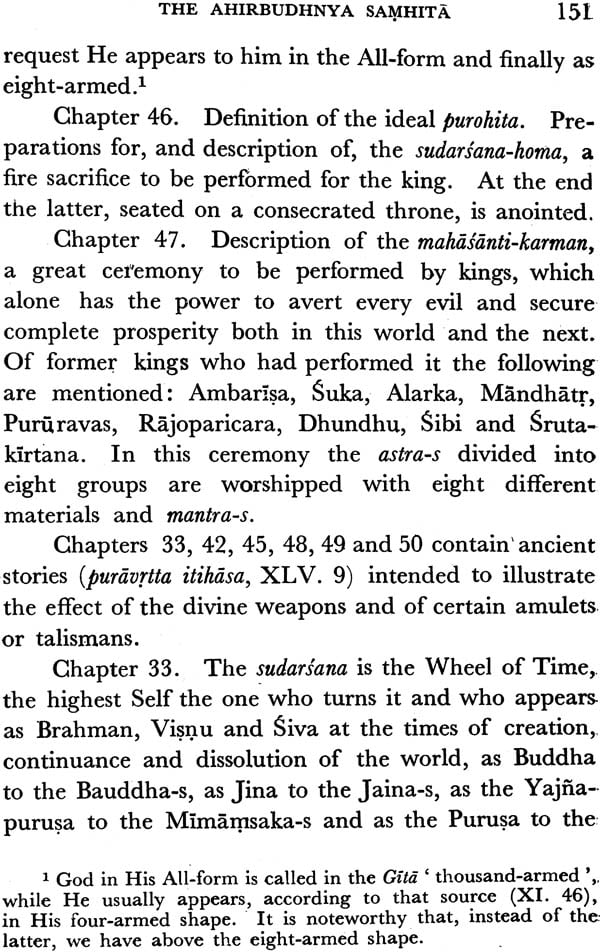
Click Here for More Books Published By Adyar Library and Research Centre





